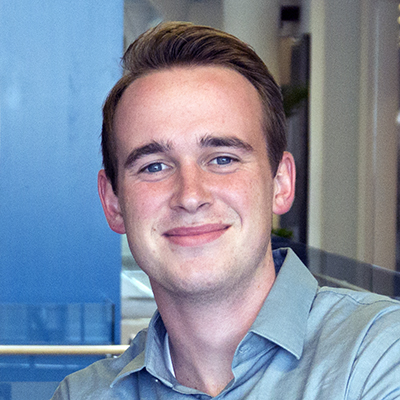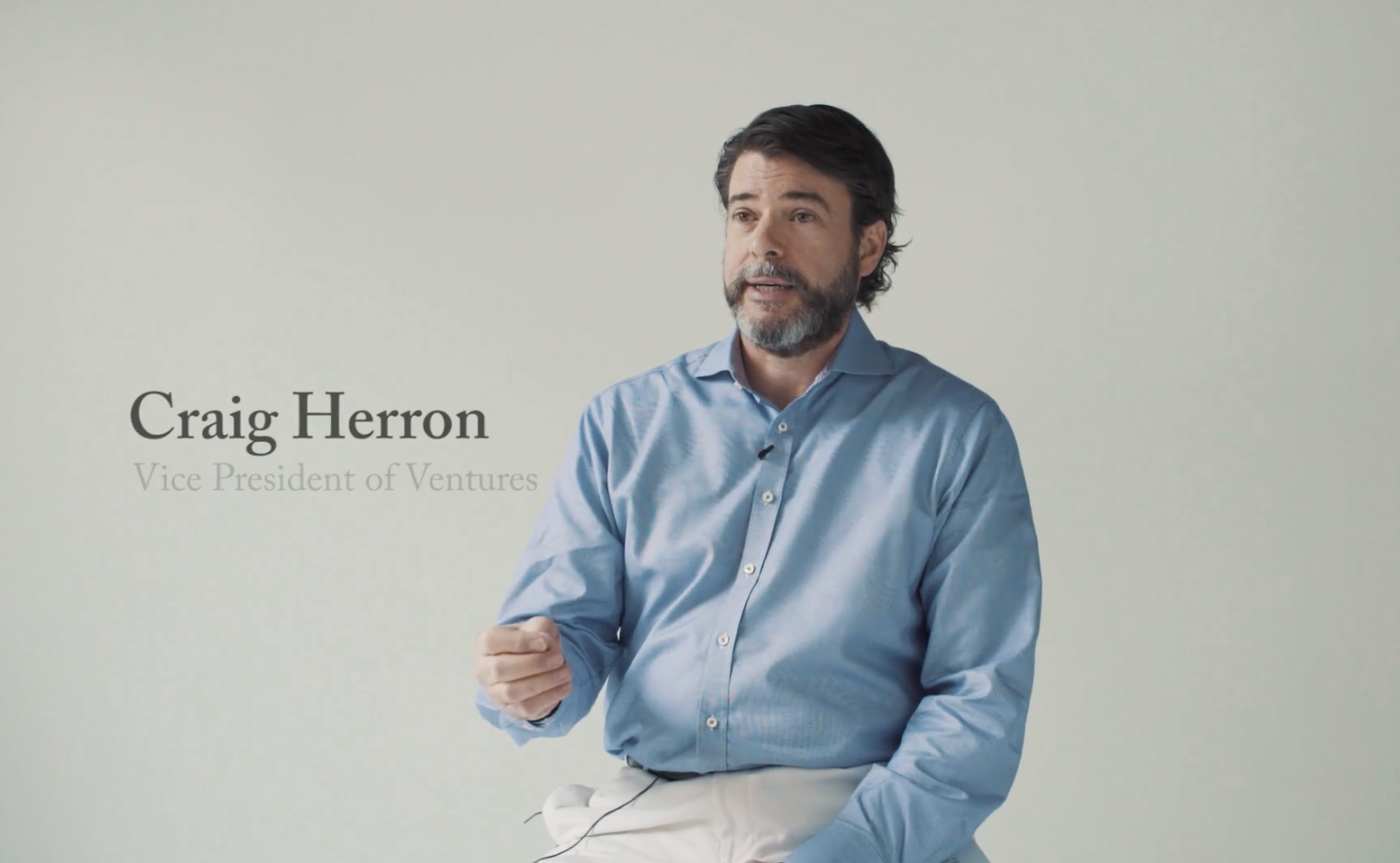Let’s start with the bold point: Innovation is an economic superpower.
We don’t do Medicaid well in this country. We don’t do socialism well. We try, but our superpower in this country is innovation. There’s a reason why that is, and it’s why, to fix health care costs we have to fix food.
Food right now is a gateway drug to health care spending. The thing that should have been said right at the beginning of COVID is “stop eating refined sugar.” That probably could have reduced death rates by 40% in diabetic patients alone. But the FDA wouldn’t do it, because they didn’t have a randomized control trial or it would distract from another message.
The objective of innovation is not to come up with a better product that’s more expensive. It’s to come up with a better product that’s cheaper. Innovation is a deflationary force.
And the way we’re going to do that is by digitizing everything. Yes, tech has a problem right now, but this conversation concerns agtech. By digitizing the food system, we can drive tremendous productivity, not in calories, but in nutrition.
It’s simple: there are 7.8 billion people in the world, and everyone has to eat. They don’t have to have an iPhone. They have to eat.
By 2050, that population will increase by 2 billion people because we’re living longer. That’s going to put a worldwide pressure on the food system to double protein. We don’t have enough farmland to make enough pigs and soy to feed everyone.
It’s an unbelievably large market. In the U.S., we spend $1.7 trillion on food. We spend $1.9 trillion on health care. We’re talking about an industry in which we spend $1.7 billion to make the product and eat, and we get $1.9 trillion dollars of rework for our errors in the form of health care costs.
It is ridiculous.
When we talk about Food is Health, or making better food, we talk about somebody who’s in the inner city or at the bottom of the pyramid eating ramen noodles and fried food every night or crappy processed food.
And when we talk about how to fix it, it’s about how to deliver better food. For example, innovations that offer plant-based meats at price parity with ramen noodles. Better nutrition, but not perfect yet.
When we think about figuring out how to fix health care, we think about new business models. Who’s the only person in the insurance industry that wants you to live longer? It’s not your health insurer. They figured out long ago how to make money while paying $200,000 for your cancer. Dying of lung cancer costs the government less than years of social security. The company that wants you to live longer is your life insurance company. The longer you live the more they make. Should life insurance manage your health? It’s a different business model.
The founders wanted to create something better than them. To create a country focused on the realization that the human mind, with liberty, can do better. There is no limit to the productive capacity of the human mind.
Here’s the fundamental truth about every other country in the world that’s ever tried to compete against the United States: They are always, once they reach stasis, 1% lower in GDP growth per year. Why?
They’re copycats.
They are great process implementers. But they copy what we do. However, the best innovators in the world are product innovators. Rob Ryan, who started Ascend communications and sold it for $25 Billion, is one of the best product innovators from the days of the internet.
Who’s the best product innovator for food? Who’s the best product innovator for energy? When Rob Ryan started selling Ascend’s ISDN terminal, he pitched every ISP alphabetically. PSINet was his first order. He was close to the customer, driving innovation and delivering an incomplete product. But he was innovating and trying to figure out what the customer wanted.
An Innovation Advantage
The U.S. is better than anybody else in product innovation because we pay attention to that customer and understand how to innovate it. We build innovation with imperfect knowledge. No country, no matter how well coordinated, can beat the expansive productivity of the human mind.
So how do we grow GDP faster? If the U.S. is so good at this, and we see 2.5% GDP growth, how do we get it better? In the ’40s through the ’60s, we ran around 4%. What the hell happened?
We can’t do better because in the early 1900s, we couldn’t run corporations well. Alfred Sloan stepped in, and set up the modern organization to deal with the confusion of, how do you deal with all these customer requirements and move them forward.
That has worked for a long time. It has its limits. What do we do next? We have to leverage Distributed Autonomous Organizations to improve resource allocation to the best opportunities, we have to leverage engagement with customers, we have to leverage venture capital, we have to get close to those customers.
What’s the other reason we can’t do it? Because large corporations like Boeing, where I worked for 15 years, are frankly rent seekers. Too often corporations take the easy path. They ask for cheap money to buy back their stock or ask Congress for favors to slow down SpaceX. We have to get rid of the rent-seeking. Corporations need to fight for customer insights. They need to win in the marketplace.
But you are the other critical part. Are you a person who provides capital? Are you a person that helps the startup? Are you someone who helps the startup find customers? Are you a person that tells other people the story? You each play a role in the network of innovation. You have been successful. Now how will you leverage your success?
While economists chat at cocktail parties, our economy is driven by the power of innovation. Total Factor Productivity in tech has grown exponentially.
In Tech TFP has reached its peak. All the other lines in the jumbled chart are every other industry code in our country ready for increased total factor productivity. Total factor productivity is basically the consumer welfare, hidden below the radar, that drives our economy just a bit more.
Tech is not Better Cat gifs
Innovation is better when it is about a woman in Ferguson Missouri who can’t afford a good job and has to take a bus from Ferguson to St. Louis because that’s the only public transportation available when her job opportunity is in St. Charles. If she had low-cost, autonomous transportation taking her to a better job, her human capacity and happiness expand.
The ability to use technology to bring people into the game is the economic superpower of innovation. And every other one of those lines, except the top yellow one, is an opportunity for us to grow the global economy.
Digitize everything: This is a chart of every industry and every sector of that industry and the degree to which it’s digitized. Amazon has digitized its model. It reduces the resources it needs because it’s using digitization to automate business processes and speed them up.
Every red and yellow box in this is an investment opportunity.
We’re not talking about innovating things so they are more expensive. That’s stupid. We’re talking about, how do we get the cost of those things down so that somebody who is at the bottom, middle, or top of the pyramid can eat well, reduce diabetes, and lower other costs.
There’s about $65 trillion of wealth in the United States. Only $1 trillion is applied to venture capital. Venture capital is the major force that fuels innovation. Frankly, if we put $4 trillion into venture capital, our GDP would be 4% per year for the rest of our lives.
The application of that capital in the right way drives the economy. It doesn’t matter that there’s a downturn in venture capital right now. There are 50 industry segments that need more capital.
Venture capital is consistently the highest-performing asset class. It leverages Illiquidity. It is historically non-correlated. Let’s stop this noise about what’s the Fed going to do next week. If we are really trying to drive long-term growth, let’s think about the long term and the truth about what drives it.
Yale allocates 18% to venture capital. You all probably allocate 2%. What does Yale know that the rest of us don’t? They do something different about venture capital. Yale sees venture capital for its optionality.
Anybody who is really smart about investing looks for optionality. This is the shift in thinking classical venture capital fails to address. Invest in many early options. A few take off. Invest a lot more.
This is a major thing we changed at Boeing when I worked for the CTO.
The CTO, David Swain, who was the guy when Gemini came in wrong and landed 100 miles off course, had the project on the weekend to fix it. And he did. Very smart guy. But he told me I can’t figure out what to invest in each year to protect Boeing’s future. I’m not smart enough to do it. He was CTO of Boeing. He knows a lot of stuff. Where do we spend $2.5 billion per year?
We created a program of optionality in which we basically said, let’s not rigidly put rules on the early technology. Let’s invest in a lot of early technology and let it emerge and reveal itself.
Let’s get it close to customers. Let’s see whether it can evolve a new business model. And then if it takes off, probably 2 out of 10 times, then let’s apply a huge amount of capital.
That’s what Yale does. And that’s why Yale applies 18% to venture capital. And that’s why Yale is the highest-performing asset manager out there.
Politics is hard. Innovation is better.






